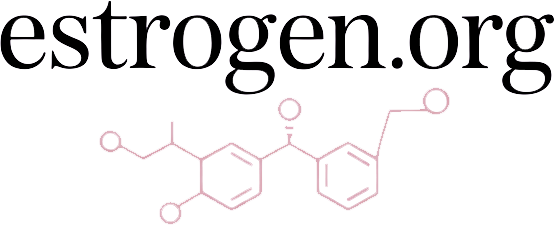Estrogen andAging
How hormone levels shift with age — and what that means for long-term health.
How Estrogen Levels Change Over Time
Estrogen follows a natural lifecycle with predictable patterns of change from puberty through later life.
Puberty
Rapid increase in estrogen triggers growth spurt, physical development, and onset of menstruation in females. In males, small increases support growth and development.
Reproductive Years
In women, estrogen levels follow a cyclical monthly pattern. In men, levels remain relatively stable with gradual decline starting in the 30s and 40s.
Perimenopause / Andropause
Women experience erratic fluctuations with occasional spikes. Men see gradual testosterone decline, leading to reduced estrogen conversion.
Menopause / Later Life
Women reach a permanent low baseline after menopause. Men continue a slow, gradual decline with less dramatic change than women experience.
Note: Individual hormone patterns can vary significantly based on genetics, health conditions, lifestyle factors, and medical interventions.
In Women – Estrogen & Aging
Women experience a dramatic shift in hormone levels during midlife, with far-reaching effects on physical and emotional health.
Perimenopause
Unpredictable surges and drops in estrogen, often beginning in the 40s
Common Symptoms
- Irregular periods
- Hot flashes (mild to moderate)
- Sleep disturbances
- Mood changes
- Vaginal dryness
Menopause
Permanent decline in estrogen production, defined as 12 consecutive months without a period
Common Symptoms
- More frequent/intense hot flashes
- Night sweats
- Accelerated bone loss
- Increased cardiovascular risk
- Vaginal atrophy
Postmenopause
Sustained low levels of estrogen for the remainder of life
Common Symptoms
- Continued bone density loss
- Increased risk of osteoporosis
- Cardiovascular changes
- Continued but often improving hot flashes
- Stable but lower hormone levels
Want to learn more about estrogen's role in women's health?
Explore our dedicated page with comprehensive information.
In Men – Estrogen & Aging
Men also experience age-related hormonal shifts, often referred to as "andropause," with changes in both testosterone and estrogen levels.
How Hormones Change in Aging Men
The Testosterone-Estrogen Connection
In men, most estrogen is produced through the conversion of testosterone by an enzyme called aromatase. As testosterone levels decline with age (typically 1-2% per year after age 40), there's less testosterone available to convert to estrogen.
Age-Related Changes
- Gradual Decline: Unlike the relatively rapid hormonal transition women experience, men's hormonal changes occur more gradually over decades.
- Individual Variation: Some men maintain relatively stable hormone levels well into older age, while others experience more significant declines.
- Balance Matters: The ratio between testosterone and estrogen often becomes more important than absolute levels with age.
Effects of Changing Estrogen in Aging Men
Physical Changes
- Increased visceral fat accumulation
- Decreased bone mineral density
- Changes in muscle mass composition
Functional Changes
- Reduced libido and sexual function
- Changes in energy levels and vitality
- Cognitive performance changes
Curious about estrogen's role in men's health?
Discover more about this essential but often overlooked hormone.
Health Implications of Low Estrogen with Age
The decline in estrogen levels affects multiple body systems in both women and men, with wide-ranging health implications.
Bone Health
Low estrogen accelerates bone mineral density loss, increasing fracture risk. Both women and men become vulnerable to osteoporosis, with women at higher risk due to more dramatic estrogen decline.
Cardiovascular System
Estrogen helps maintain blood vessel flexibility and favorable cholesterol levels. Its decline contributes to increased cardiovascular risk, one reason heart disease risk rises after menopause.
Brain Function
Cognitive changes may occur as estrogen declines. Memory, mood regulation, and sleep patterns can all be affected, though the relationship is complex and varies by individual.
Metabolism & Body Composition
Hormonal shifts often lead to changes in fat distribution (more central/abdominal), decreased muscle mass, and altered insulin sensitivity, affecting overall metabolic health.
Important: While these changes are common, they are not inevitable. Proactive health management can address many age-related hormonal effects.
Managing Estrogen Through Aging
There are multiple approaches to addressing age-related estrogen changes and their effects on health.
Hormone Replacement Therapy (HRT)
Medical intervention that provides exogenous estrogen (and often progesterone for women with a uterus) to supplement declining levels.
Potential Benefits
- Relief from menopausal symptoms
- Protection against bone loss
- Potential cognitive benefits
Considerations
- Benefits vs. risks vary by individual
- Different delivery methods available (pills, patches, gels)
- Requires medical supervision
Lifestyle Approaches
Non-medical strategies to support hormone balance and mitigate the effects of age-related estrogen decline.
Potential Benefits
- Few side effects or risks
- Overall health benefits beyond hormones
- Complement to medical approaches
Key Strategies
- Regular weight-bearing and resistance exercise
- Mediterranean or plant-forward diet rich in phytoestrogens
- Stress management techniques
- Adequate sleep hygiene
Important Health Considerations
All hormone-related interventions should be personalized based on individual health history, risk factors, and specific symptoms. Regular monitoring is essential.
Learn more about Estrogen TherapiesCommon Questions About Estrogen and Aging
Get our free guide: Estrogen 101
A Quick Start to Understanding Hormones – the essential information you need, delivered straight to your inbox.
